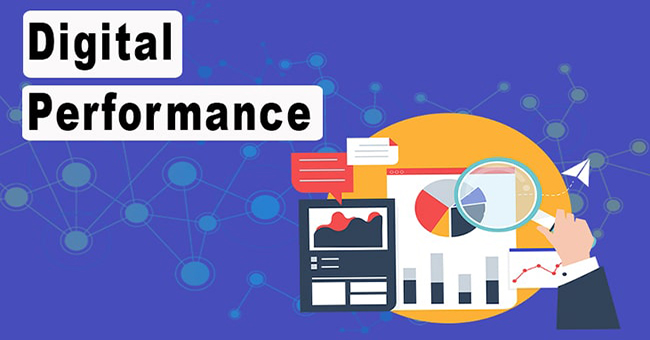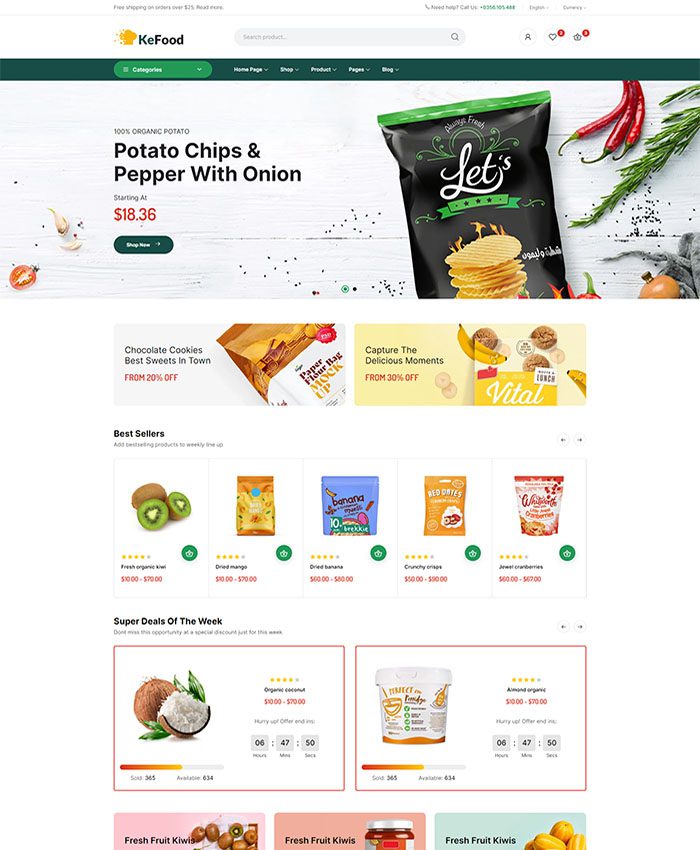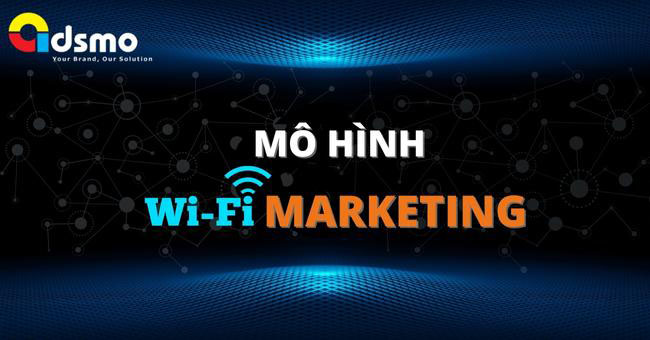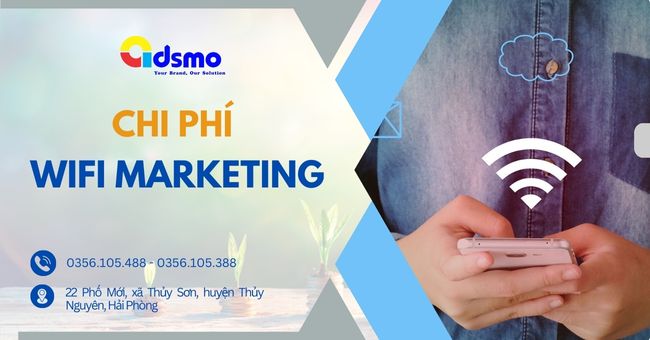You have spent a lot of money on advertising but still do not get the expected results. Worse, you do not know the reason why your advertising campaign failed and how to spend effectively. Then Digital Performance Marketing helps you solve the above problems.
Digital Performance is an Online Advertising strategy that has made a big impression in the world Digital Marketing over the years. It has a huge impact on the success of a marketing campaign, with the ability to measure everything from brand reach to conversion rates.
1. What is Digital Performance?
Digital Performance Marketing is a branch of Digital Marketing strategy, a performance-based marketing model.
According to IAB Interactive Advertising Bureau, previously, the goal of Digital Performance Marketing was only to promote a specific action, advertisers only paid when a conversion or sale was successfully completed. However, today, Digital Performance also serves Brand Advertising activities with the goal of building brand awareness and optimizing costs based on the number of CPM impressions.
Recently, many types of campaigns are called “performance”, largely due to the development of Programmatic Buying (automated advertising purchase) and other technology platforms. They create opportunities for marketers to measure and optimize advertising campaigns in real time.
So what’s so special about Digital Performance?In most traditional forms of advertising, advertisers pay for good ad placement but cannot measure performance. This means that you can keep spending on advertising but there are no conversions. With Performance Marketing, advertisers only pay for successful conversions such as increased leads, clicks or orders. Not only that, businesses also track and evaluate the entire customer experience, from the moment they see the ad to completing a purchase.
2. The Difference Between Digital Performance Marketing and Other Forms of Advertising
2.1 Digital Performance vs Brand Marketing
Brand Marketing aims to build relationships with customers to increase brand awareness, drive consumer emotions, motivate buyers and maintain customer loyalty. Digital Performance deals with specific data, it focuses on optimizing campaigns continuously to bring more conversions, therefore, requires testing, then making decisions based on performance.
2.2 Digital Performance vs Affiliate Marketing
Affiliate Marketing is a type of Digital Performance Marketing, advertisers will pay affiliates to market their brand, product or service. Performance Marketing is a more “mature” version of Affiliate Networks. Affiliate Marketing itself only cares about conversion rates, it does not guarantee that consumers will buy your product/service. But Performance Marketing does not, if 1000 people visit the website but no one buys, affiliates will not be paid a penny.
3. Benefits of Digital Performance Marketing
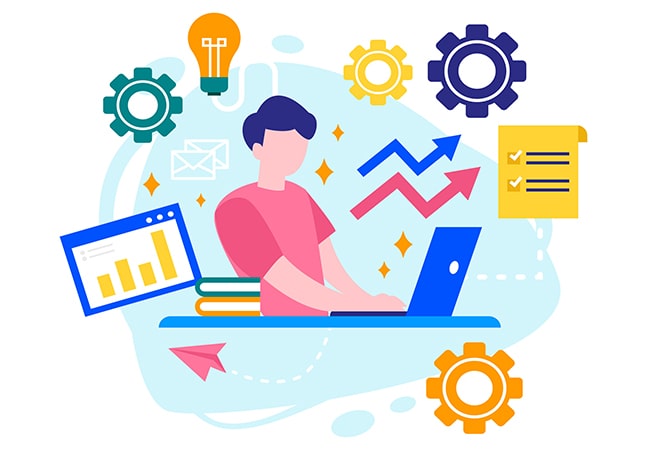
Digital Performance has many benefits and here are detailed reasons why you should use this marketing model:
- Low risk: Digital Performance has lower risks than traditional advertising. You can track performance in real time, adjust your budget, or even pause your campaign in time to minimize risk.
- Measurable: Businesses can track campaign metrics accurately at all times, so there’s no need to guess or make vague estimates like before. On advertising platforms, you’ll be provided with the most intuitive overview and quickly evaluate the effectiveness of your campaign.
- Transparent: Digital Performance is the best way for businesses to eliminate loopholes in previous advertising, everything is clear and transparent. It shows you exactly what you get for your advertising spend. Questions that are still unclear to you such as where the money goes, who clicks, which ads are working and which are not, are all clarified.
- Maximum reach: With Performance Marketing, you will reach more new and diverse customers than with traditional marketing. All your websites or advertising platforms are converted (if there are no conversions, you will not have to pay a third party). Therefore, they will do everything to bring your brand to their users.
- More flexible: Digital Performance is very flexible, you will never spend money on things that do not work. Clear numbers will help you quickly realize that an ineffective campaign, you just need to stop and try another campaign.
4. What does Digital Performance include?
Digital Performance Marketing includes 4 groups:
- Retailers or Merchants
- Affiliates or Publishers
- Affiliate Networks and 3rd Party Measurement Platforms
- Affiliate managers or OPMs (Outsourced Program Management Companies)
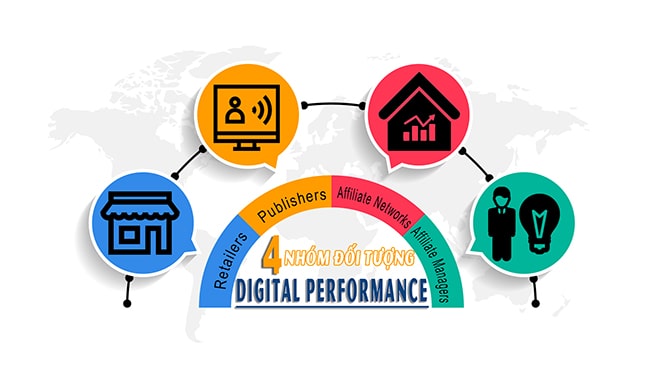
Let’s see how Digital Performance works:
4.1 Retailers or Merchants
Also known as Advertisers, these are businesses that are looking to promote their products and services through Affiliate Partners or Publishers.
Today, consumers often trust product recommendations and reviews from influencers or other buyers. This is the behavior of customers who are in the research stage of purchasing.
Retailers or e-commerce companies that use Performance Marketing have good Affiliate Partners cooperation programs to achieve marketing goals, increase traffic, visibility and generate good ROI.
4.2 Affiliates or Publishers
Are Marketing Partners in the Performance Marketing space.
Affiliates or Publishers come in many forms such as: websites providing discount codes, product review websites, blogs, online magazines, cashback websites in the direction of Loyalty Point,…
Influencers are Publishers who promote products/services through their blogs, social groups and social channels to provide their followers with personal experiences and reviews. At the same time, brands will use Influencers to introduce newly released products, exclusive products, often with incentives or gifts for their fanbase.
This partnership brings a lot of value to the brand, in addition to selling products, the brand also builds customer trust through influencers.
4.3 Affiliate Networks and Third-Party Measurement Platforms
Affiliate Networks and Third-Party Measurement Platforms are trading platforms for Advertisers and Affiliates. It provides information and tools such as banners, text links, product feeds, promotions, payment intermediaries.
For Merchants and Affiliates, these exchanges are a means for them to track potential customers, clicks, conversions, and a place to resolve disputes between the two parties.
Each Affiliate Network and 3rd Party Measurement Platform has its own strengths and weaknesses, suitable for each Merchant’s budget and field. Therefore, you should learn carefully or seek advice from experts such as Affiliate managers, OPMs.
4.4 Affiliate managers or OPMs (Outsourced Program Management Companies)
The affiliate manager can be a person from the business. In addition, many brands work with Affiliate management agencies. Working with experienced Affiliate managers or OPMs, a rich network of affiliate partners will help brands expand the scale and performance of marketing programs, increasing ROI faster.
These units will advise Publishers on how to advertise services/products, popular payment methods, product maintenance, suggest potential keyword lists, effective marketing tools,…
5. Digital Performance Channels
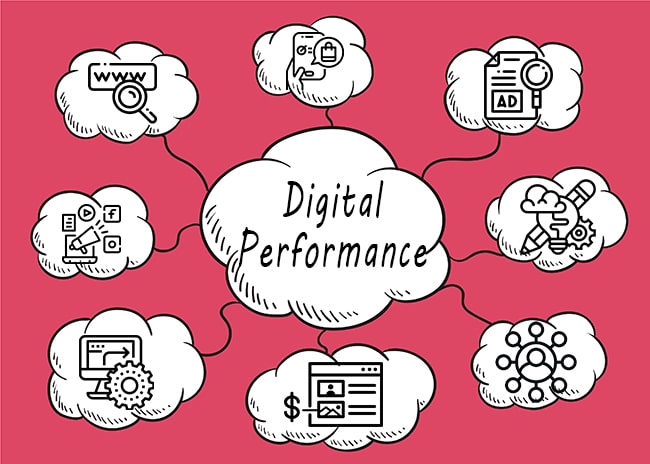
Digital Performance is growing and expanding into many different channels. Some popular Digital Performance channels include:
- Paid User Acquisition
- Search engine marketingSearch engine marketing
- Social media advertising
- Programmatic Advertising
- Native Advertising
- App Store Optimization
- Search Engine Optimization
- Creatives
- Affiliate Marketing
6. Performance Marketing Metrics
- Cost Per Impression (CPM): The amount an advertiser pays to a publisher for every 1,000 times an ad is displayed.
- Cost Per Click (CPC): Advertisers only pay when a user clicks on their ad.
- Cost Per Lead (CPL): Advertisers only pay when a lead fills out an information form. This is a hidden signal that allows businesses to communicate with customers.
- Cost Per Action (CPA): Advertisers only pay when users perform a desired action such as placing an order, clicking on an ad or filling out a form.
- Cost Per Install (CPI): Advertisers only pay when users install their app thanks to the ad.
- Click Through Rate (CTR): The rate at which users click on an ad over the total number of views.
- ROAS (Return On Advertising Spend): An indicator that evaluates the effectiveness of an advertising campaign in generating the desired results, allowing businesses to know which methods are effective and where to improve.
Based on these indicators, businesses can accurately target their target audience and create advertising campaigns with the most appropriate messages.
7. 4 steps to effectively deploy Digital Performance
- Step 1: Determine the campaign goal: Is your campaign long-term or short-term. What is the campaign goal? Branding or Sales.
- Step 2: Set KPI: Determine the right KPI that matches the campaign goal. Do not chase after other frivolous indicators. This is a very important step to achieve positive results.
- Step 3: Choose keywords: Build a set of keywords that best match user behavior to increase the chance of users seeing your ads.
- Step 4: Monitor and measure results: Analyze metrics to see if your advertising campaign is effective? Should you continue, reallocate budget or implement another Marketing Strategy.
Deploying an effective Digital Performance Marketing campaign is not simple. If your business is aiming for an advertising campaign that optimizes costs and performance, please contact Adsmo for detailed advice.
See more:
Contact ADSMO now – INFORMATION TECHNOLOGY & MARKETING solution, providing customized Enterprise Software solutions, consulting on building digital platforms with the mission:
TOTAL solution, BREAKTHROUGH development – Optimizing COSTS – Increasing PROFITS. We are committed to providing you with:
- Management solutions tailored to your business needs.
- Easy-to-use and efficient systems.
- Professional customer support services.
Contact ADSMO now for a free consultation:
- Address:8th Floor, HD Tower Building – 22 Pho Moi – Thuy Nguyen Ward – City. Hai Phong
- Website: https://adsmo.vn
- Email: info@adsmo.vn
- Hotline: 0356 105 388


